Abstract
Seventy-four regular users of methylamphetamine injections were interviewed in four settings by use of a relatively structured standardized questionary. All but two had injected methylamphetamine within the previous 48 hours and had on average been using methylamphetamine continuously for 19 months.
Significant features found in those interviewed were British nationality, single status, under 25 years of age, and a history of parental separation, absence, or bereavement. Educational standards were poor and a history of consistent truancy from secondary school was frequently reported.
Comparison of their best and present occupations showed that downward drift had occurred. Forty-one per cent. of the sample had some definite or tentative evidence of neurotic disturbance in childhood. Twenty-three per cent. had been sentenced to detention centre, approved school, or Borstal training, and 20% had been sentenced to prison. Sixty-five per cent. had been charged with offences of one sort and 24% had been convicted of both drug and non-drug offences.
A significant number had been heavy drinkers in the past, while most had been, and in many cases still were, multiple-drug users who had first started to use drugs between the ages of 16 and 20 years. They tended to have obtained methylamphetamine initially from people they knew or from sellers. While the majority were currently getting methylamphetamine from doctors, the fact that 40% gave non-medical agents as their major source of drugs suggests that a significant number were supplementing their supplies from illicit sources. More than one-half were rated as being continually involved in the “drug scene.”
Most of those interviewed accepted frequent psychotic episodes as a side-effect of their use of methylamphetamine. Malnutrition, weight loss, and sleep disturbance were frequent.
Full text
PDF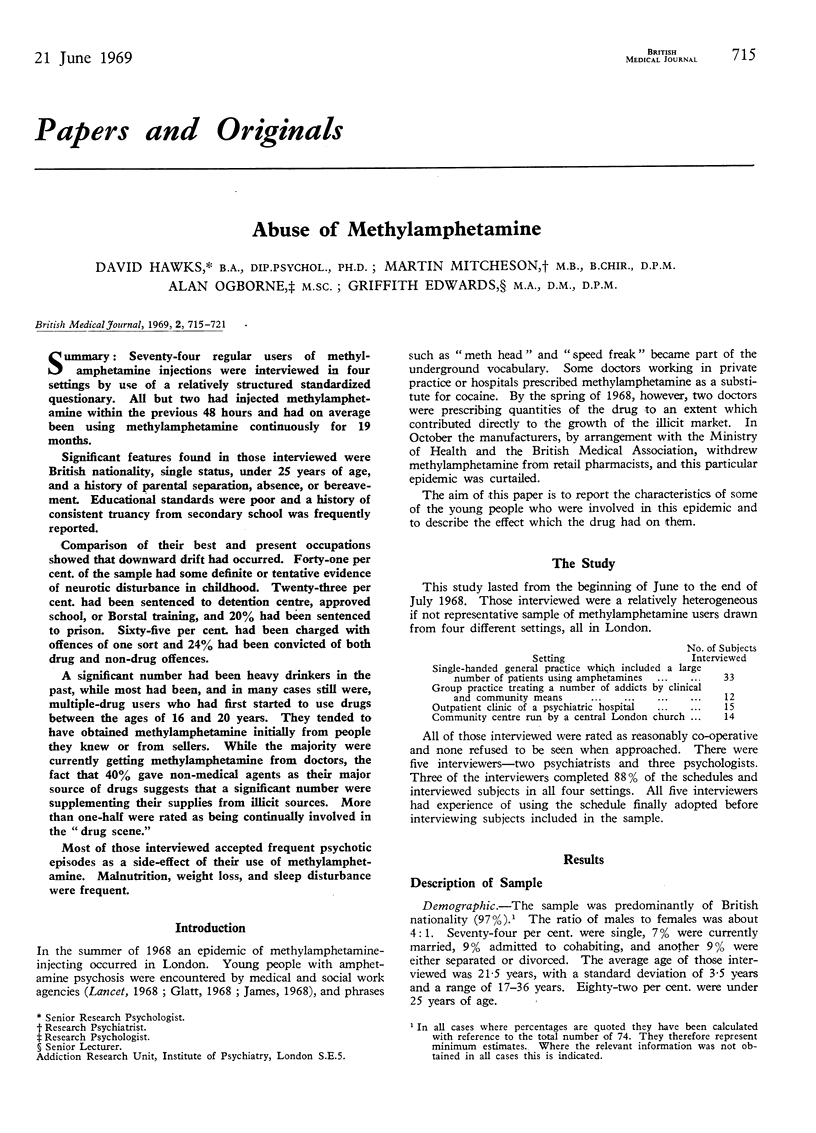
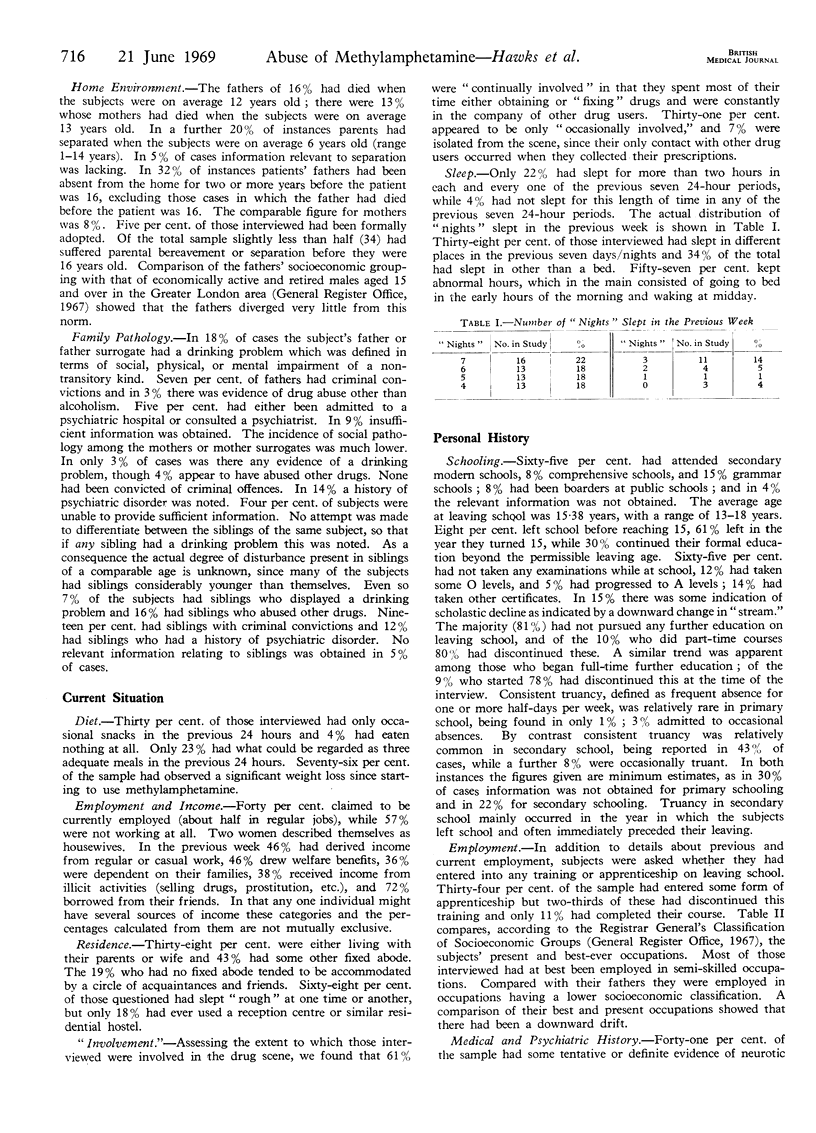
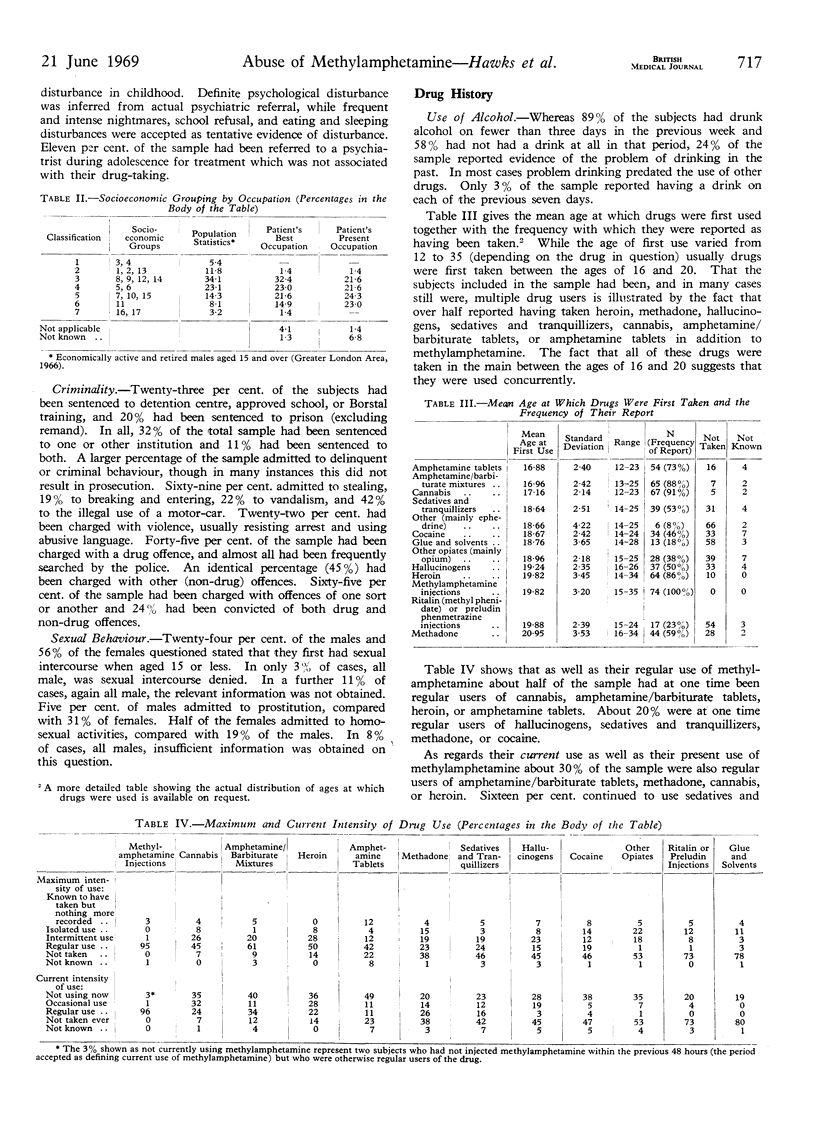
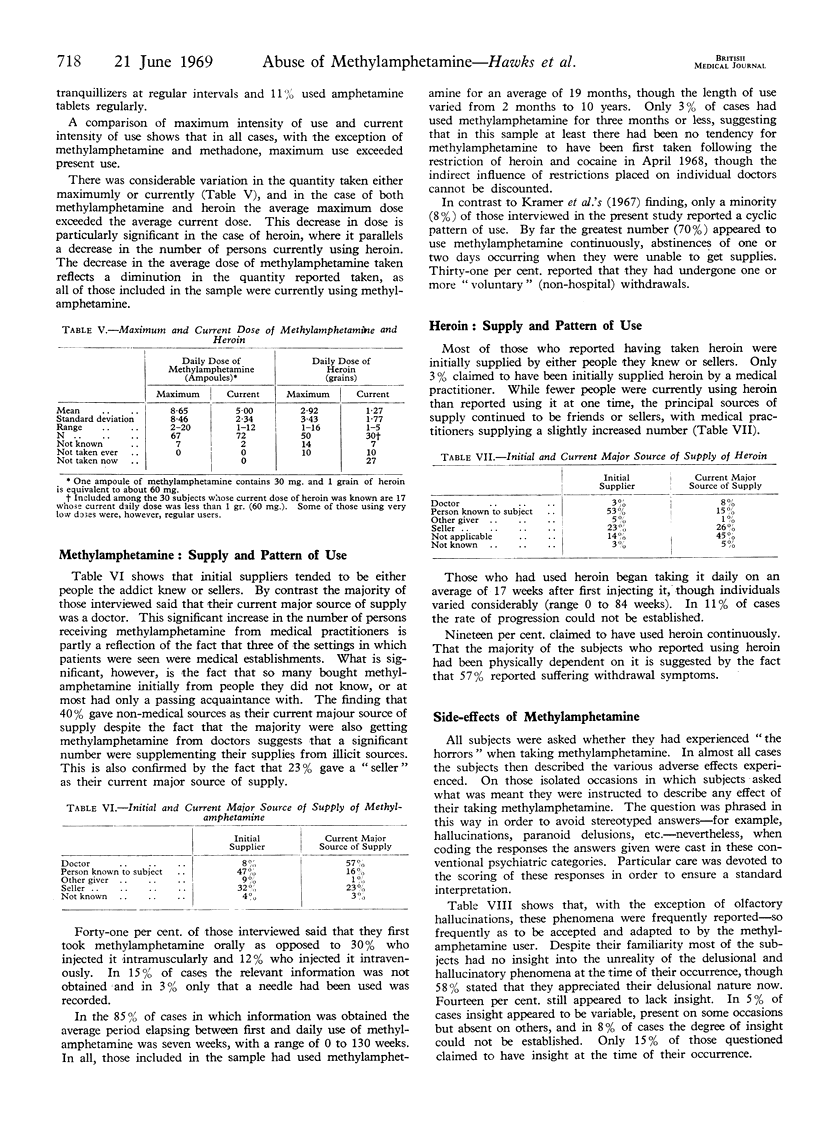
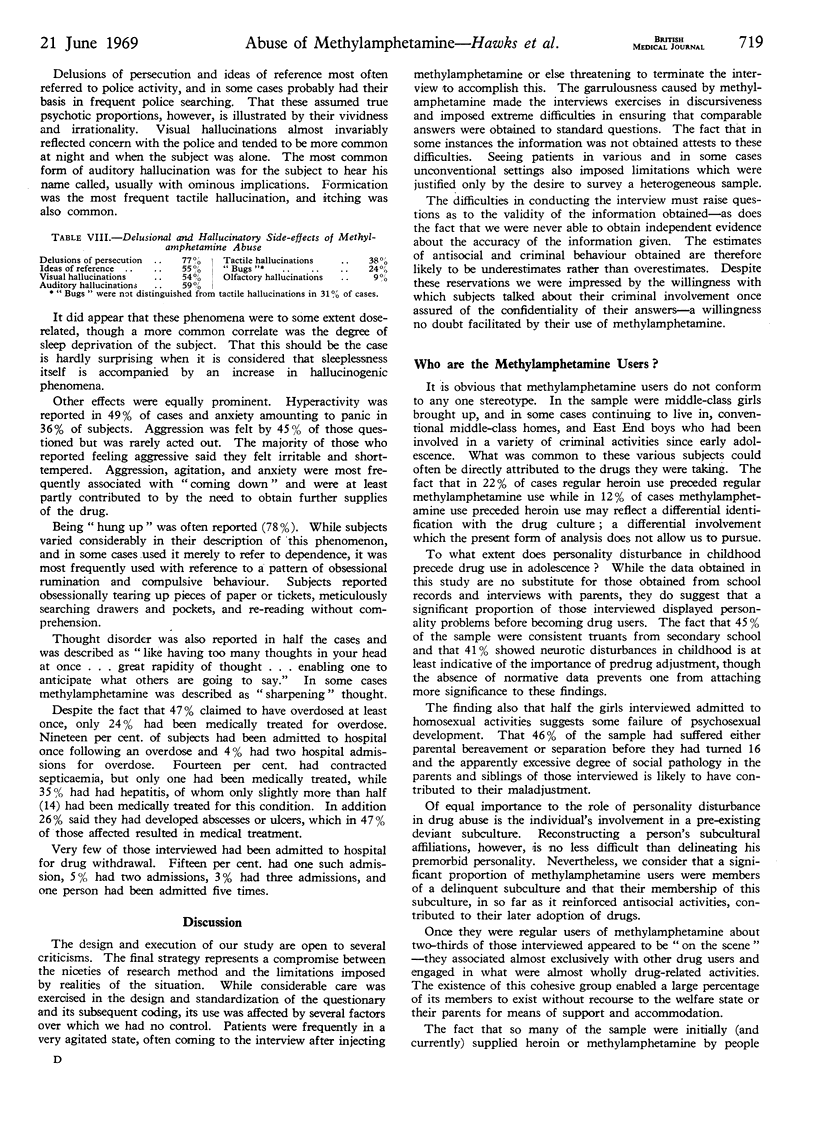
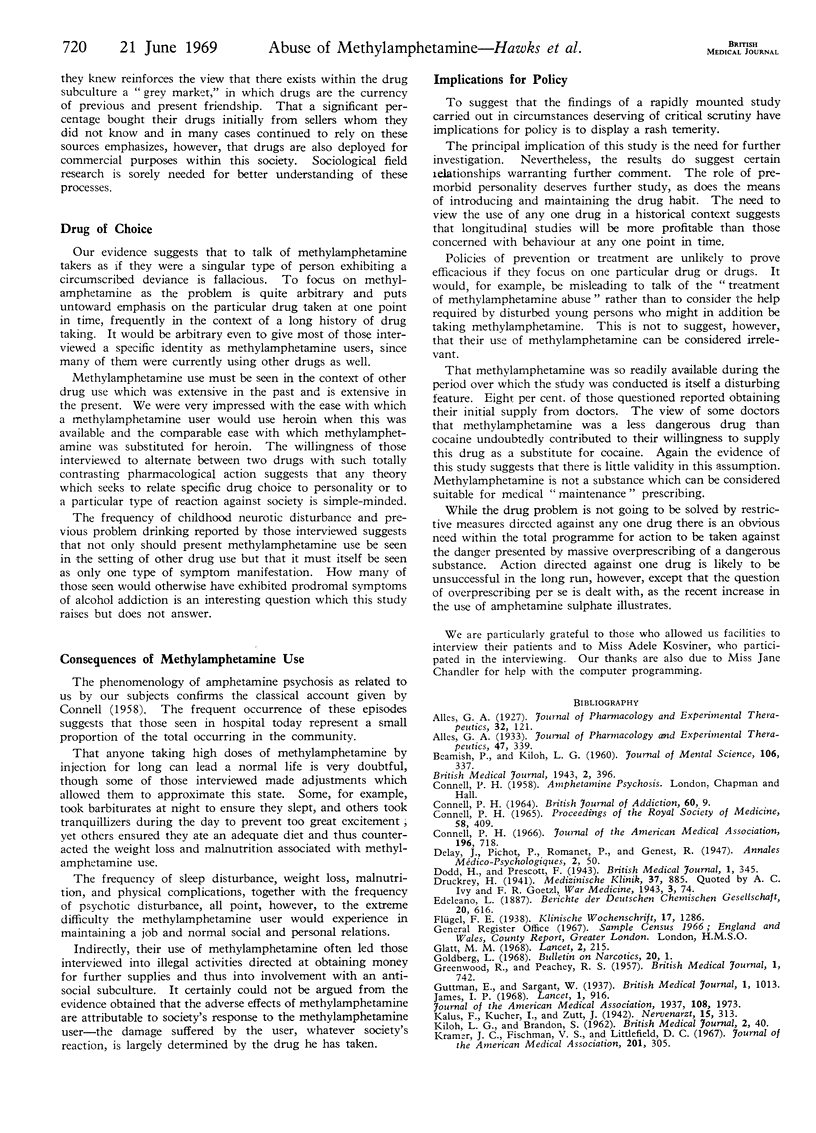
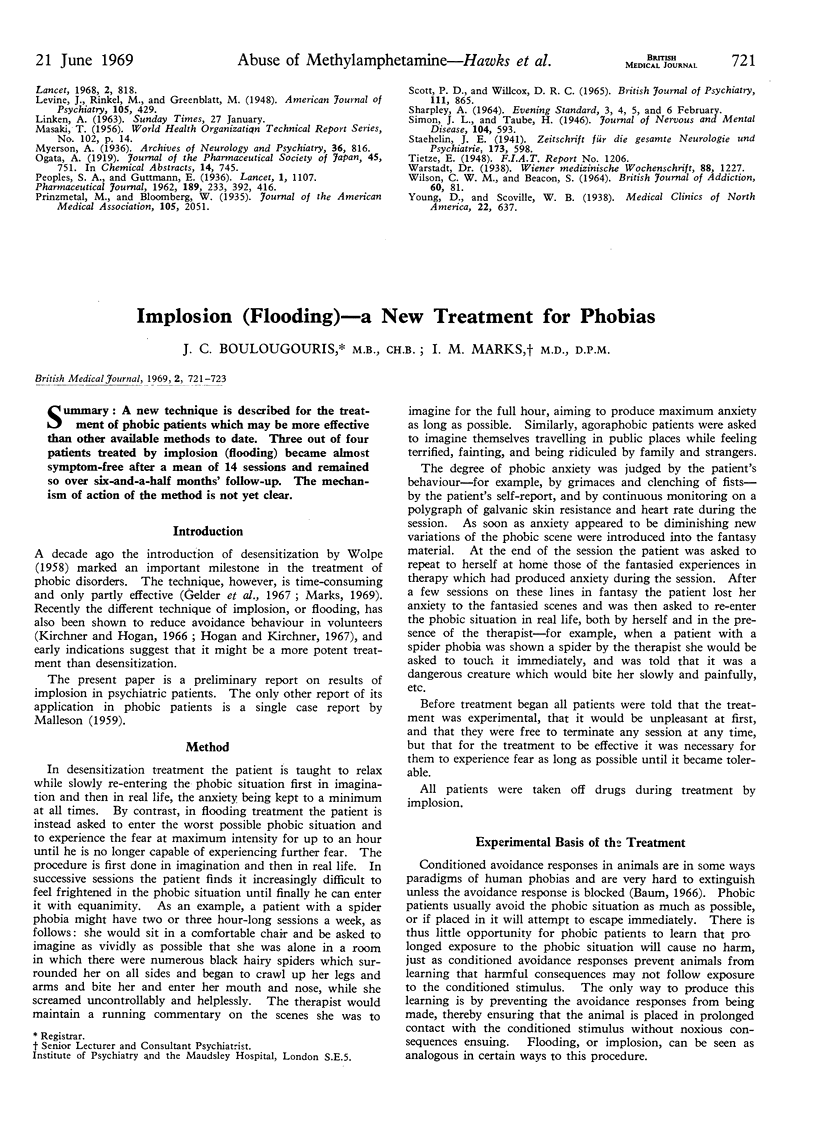
Selected References
These references are in PubMed. This may not be the complete list of references from this article.
- BEAMISH P., KILOH L. G. Psychoses due to amphetamine consumption. J Ment Sci. 1960 Jan;106:337–343. doi: 10.1192/bjp.106.442.337. [DOI] [PubMed] [Google Scholar]
- CONNELL P. H. DRUG ADDICTION. ADOLESCENT DRUG TAKING. Proc R Soc Med. 1965 Jun;58:409–412. [PMC free article] [PubMed] [Google Scholar]
- Glatt M. M. Abuse of methylamphetamine. Lancet. 1968 Jul 27;2(7561):215–216. doi: 10.1016/s0140-6736(68)92646-9. [DOI] [PubMed] [Google Scholar]
- Guttmann E., Sargant W. Observations on Benzedrine. Br Med J. 1937 May 15;1(3984):1013–1015. doi: 10.1136/bmj.1.3984.1013. [DOI] [PMC free article] [PubMed] [Google Scholar]
- James I. P. A methylamphetamine epidemic? Lancet. 1968 Apr 27;1(7548):916–916. doi: 10.1016/s0140-6736(68)90262-6. [DOI] [PubMed] [Google Scholar]
- KILOH L. G., BRANDON S. Habituation and addiction to amphetamines. Br Med J. 1962 Jul 7;2(5296):40–43. doi: 10.1136/bmj.2.5296.40. [DOI] [PMC free article] [PubMed] [Google Scholar]
- Kramer J. C., Fischman V. S., Littlefield D. C. Amphetamine abuse. Pattern and effects of high doses taken intravenously. JAMA. 1967 Jul 31;201(5):305–309. doi: 10.1001/jama.201.5.305. [DOI] [PubMed] [Google Scholar]
- Scott P. D., Willcox D. R. Delinquency and the amphetamines. Br J Psychiatry. 1965 Sep;111(478):865–875. doi: 10.1192/bjp.111.478.865. [DOI] [PubMed] [Google Scholar]


